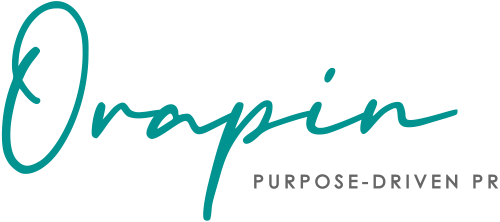
Advanced planning and staying organized are keys to PR success
For busy marketing and communications teams, PR can often be an afterthought. You know you should be dedicating time and resources towards your PR efforts, but in reality, your efforts may be ad hoc and inconsistent. Further, many organizations struggle with a lack of strategy and direction in their PR efforts. As a result, efforts can be inconsistent which often leads to missed opportunities, lackluster results, and a general sentiment that PR doesn’t work. Rest assured, PR works if you are organized and put in the effort! So how do we solve this problem? We create a PR Hub!
What is a PR Hub? Glad you asked! For those of us who like to stay organized, and for those who feel a sense of joy from an elaborate spreadsheet, the PR Hub is your go-to resource for yearly PR planning. It is a place where you can keep track of all planned events; announcements; yearly observances; editorial, award, and speaking opportunities; etc. Now before you brush this off as a boring administrative task, consider the importance of having all your PR opportunities and plans in one spot. Not only will a PR Hub keep you organized and on top of your outreach schedule for the year, but it is also vitally important when considering how to allocate time and resources.
A PR Hub should be a one-stop shop and reference for your daily, weekly, monthly, and quarterly PR to-do list. Every PR practitioner knows that there are infinitely more activities one could be doing than there is time in the day. With a PR Hub, you can stay organized, focus time and effort on the most important tasks, and stay on top of what is coming next. For anyone who has opened the calendar and said, “Oh man, INSERT ANY HOLIDAY is next week already!? Shoot, I wish I had planned something for that,” this blog post is for you. Read on, dear friend.
What does a PR Hub look like?
A PR Hub is a spreadsheet containing details on anything and everything that might pertain to your PR activities. Your PR Hub should include at least 12 months of planning and should include both external and internal important dates, meaning both happenings in the world and those specific to your organization. In addition, you want to include PR activities that align with both these internal and external events. Each organization will differ in what PR areas they are focused on; for example, some organizations may focus heavily on speaking and thought leadership opportunities for their executive director, while others are looking for media pitching opportunities or awards.
Your PR Hub could be a spreadsheet that looks like this:
| Relevant Holidays/ Events/ Observances |
Planned Announcements/Initiatives/ Events |
Editorial Opps | Timely Media Pitches |
Timely Contributed Articles |
Speaking/ Networking Opps |
Awards | |
| June 2023 |
|
||||||
| July 2023 |
|
These are the key elements that you should include in your PR Hub and why:
1. Relevant holidays/events/observances
Go through the 12-month calendar and include any and all holidays and observances that are relevant to your organization. Observances may include International Women’s Day, Mental Health Awareness Month, National Recovery Month, etc. Add in major holidays, from Christmas to Ramadan to the 4th of July, and think about how you could leverage these holidays to make your PR efforts timely. Don’t forget to include events, such as back-to-school or Giving Tuesday, if they are relevant to your organization.
Why should these be included?
Knowing what timely events and holidays are upcoming can help guide topics for pitches, bylines, and other owned media content. Reporters are always looking for ways to cover holidays and observances in new ways, so if you know that International Day of the Girl is in October, you can adjust your pitches or byline article topics to address how your organization supports young women in honor of that particular observance.
2. Planned announcements/initiatives/events
Is your company opening a new location in July? Will you be announcing a new round of grant funding in Q4? Do you have a new executive director or board member joining in March? Will you be hosting your annual back-to-school campaign in August? These are all planned announcements that should be included in your calendar.
Why should these be included?
If the announcement is big enough to require a press release, media pitch, or stakeholder outreach, you should include it on the calendar. Having this information planned out will help you prepare supporting materials, spokespeople, and resources well in advance.
3. Editorial opportunities
Many publications, especially long-lead glossy publications, and some digital publications share their yearly editorial calendar online. Note, not all publications will share their editorial calendars and daily newspapers and many online media formats do not have calendars or choose to share them. However, if you know that your local business journal is planning to cover “healthcare” in May or that Parade Magazine will be covering “innovations in reproductive health” next September, you can plan your pitches accordingly. Tailoring your pitch to match their editorial focus can increase your chances of getting coverage in a target publication.
Why should these be included?
Not only do you want and need to know when your target publications will be covering topics pertinent to your organization, but you also need to have them on the calendar so that you don’t miss pitching opportunities. Particularly for long lead publications, you’ll want to begin pitching 4-6 months in advance to make sure you are on that editor’s radar. Glossy print publications will write their winter holiday stories in July, so having these items on the calendar will help ensure you don’t miss the opportunity to pitch.
4. Timely contributed articles or blog topics
If contributed articles or blogs are part of your PR strategy, create a list of timely topics for each month. As always, timely content related to holidays/events/observances (see column one) will get preferential treatment in the eyes of editors and readers.
Why should these be included?
It can be extremely difficult to sit down in front of a blank screen each month and try to think of something to write. It can be so difficult, in fact, that you just might not do it. Creating a list of topics and ideas for each month helps take out the guesswork. If you know your topic in advance, the words will flow more easily once you sit down to start typing.
5. Speaking/networking opportunities
If thought leadership is on your list of PR priorities, then you absolutely should include any relevant conferences, conventions, events, and gatherings on your spreadsheet. Look for national and international conferences that are relevant to your area of work, but don’t forget local events such as the annual meeting of your local women’s chamber. Be sure to include both the date of the conference and the date by which they are requesting speaker submissions.
Why should these be included?
Speaker submissions are often due months before the conference, so it is important to have these dates on the calendar to ensure you don’t miss any big opportunities. And also so that busy executives save the date to attend.
6. Award opportunities
Awards are a great way to build recognition and credibility for your organization, leadership team, and the work you do. Include industry awards, local business and leadership awards, and philanthropic awards if applicable.
Why should these be included?
Like everything else, award submissions are typically due months prior to the award announcement date. Keeping these deadlines in the calendar helps ensure you don’t miss opportunities to get well-deserved recognition for your work and your people.
Use the PR hub to support your PR goals
The list above provides the basics, but depending on your goals and strategy, you may consider including timely podcast pitches, newsletter topics, or content planning for other owned media channels, social media, etc. Whatever your internal and external communications strategies or plans may be, you’ll want to include them in your PR Hub. Further, consider your PR Hub to be a fluid document. Update and modify as needed throughout the year as new opportunities arise or priorities change.
Unless you have a very robust internal communications team, you most likely won’t be able to get to everything on your PR Hub. The PR Hub is meant to be a go-to resource to keep track of possible opportunities and to help you prioritize your efforts based on your time, personnel resources, budget, and yearly goals. At the end of the day, the PR Hub is meant to capture what is possible from a PR perspective and keep you organized so that you can see greater success and long-term ROI.

Diana Crawford is a seasoned public relations consultant with more than 15 years of agency, consulting, and in-house experience. She joined Orapin in 2013 and manages account services and client communications strategy development. She has worked across a variety of industries and has expertise with professional services, food/alcohol, health and wellness, lifestyle, sports, education, tech, and non-profit organizations.
